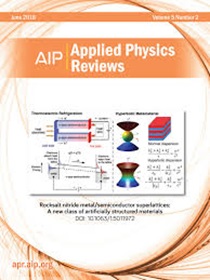Optimizing the endurance mechanisms of chalcogenide-based thermoelectric materials and devices
IF 11.9
1区 物理与天体物理
Q1 PHYSICS, APPLIED
引用次数: 0
Abstract
With superior thermoelectric transport properties, chalcogenide-based materials are considered to be promising candidates for energy conversion. As compared to the strategies enhancing thermoelectric performance, the related research works focusing on endurance mechanisms during long-term working, however, are insufficient and should be systematically evaluated for making broad applications. Specifically, systematic issues divided into mechanic, thermodynamic, and kinetic sections could play a predominated role in challenging different constituents per the intrinsic mechanisms, and the inferior stability of chalcogenides limits further developments in the next decades. In this review, typical material systems like Pb-, Cu-, and Bi-based chalcogenides as well as several emerging compounds like Ag-, Sn-, and oxygen-containing compounds would be referred and discussed extensively, focusing on the endurance ability. Subsequently, four kinds of mechanisms at different levels would be systematically summarized and investigated: first, considering the key roles on affecting mechanical stability and optimizing the compositions for forming proper bonding strength and microstructures for high density are required. Second, it is crucial to explore the interactions between the elemental vapor pressure and the service temperature in chalcogenides. Third, the uncertainties introduced by phase-transition phenomena cannot be ignored. In addition, nano-precipitates from low melting point components also put forward high requirements on the endurance. Furthermore, the coincided improvements could benefit the enhanced stability and output performance of applied devices. These unique advances combined with the corresponding strategies for long-term endurance demonstrate the potential of high-performance chalcogenides for large-scale power generation applications.求助全文
约1分钟内获得全文
求助全文
来源期刊

Applied physics reviews
PHYSICS, APPLIED-
CiteScore
22.50
自引率
2.00%
发文量
113
审稿时长
2 months
期刊介绍:
Applied Physics Reviews (APR) is a journal featuring articles on critical topics in experimental or theoretical research in applied physics and applications of physics to other scientific and engineering branches. The publication includes two main types of articles:
Original Research: These articles report on high-quality, novel research studies that are of significant interest to the applied physics community.
Reviews: Review articles in APR can either be authoritative and comprehensive assessments of established areas of applied physics or short, timely reviews of recent advances in established fields or emerging areas of applied physics.
 求助内容:
求助内容: 应助结果提醒方式:
应助结果提醒方式:


